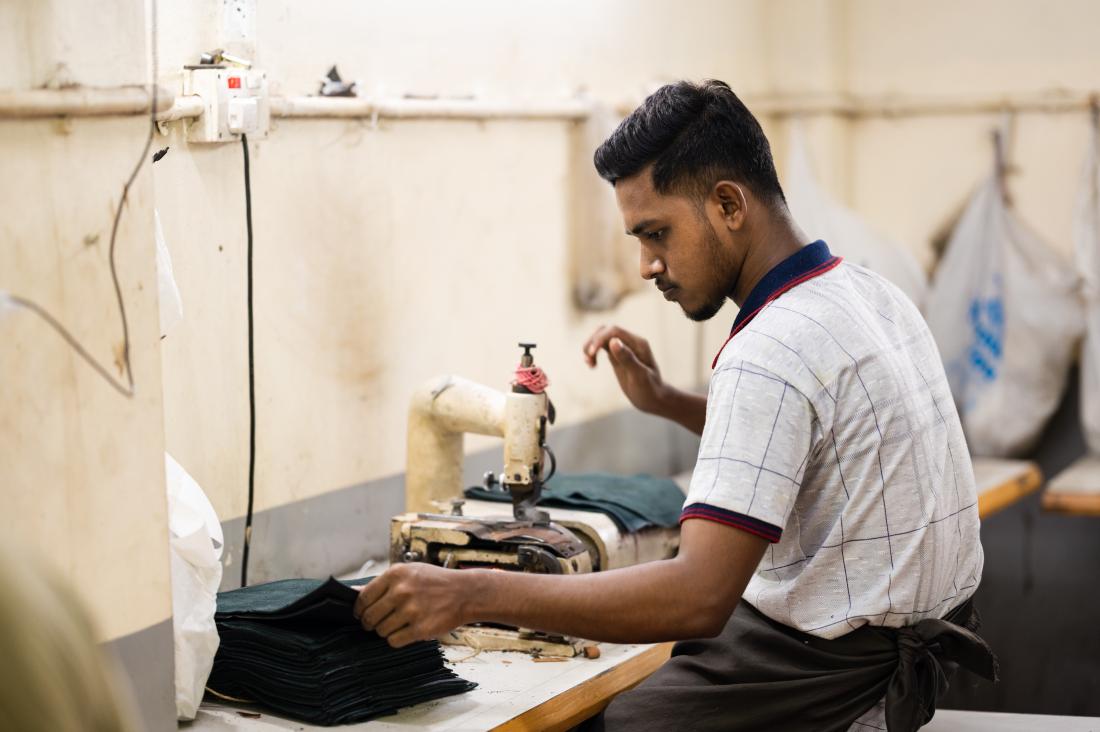Information and Adoption of Energy-Efficient Stitching Motors in Bangladesh
- Entrepreneurs
- Large enterprises
- Climate change
- Technology adoption
- Energy conservation
- Information
- Energy efficiency
As energy demand rises and climate change becomes more urgent around the world, the adoption of energy-efficient technologies by manufacturing firms is important both for reducing energy use and pollution and for stimulating inclusive growth. Researchers are working with small- and medium-sized enterprises in the leather goods and footwear manufacturing sector in Bangladesh to understand the role of information in the adoption of energy-efficient motors for stitching machines, as well as firms’ perception of and willingness to pay for the new technology. They will also estimate spillovers between groups.
Policy issue
Energy demand around the world is rising steadily. As climate change progresses, there is an urgent need for more energy-efficient technologies that produce less pollution. This is especially prevalent in the manufacturing sector, which in many countries continues to be responsible for a large share of emissions and energy consumption. The adoption of new, energy-efficient technologies by manufacturing firms is thus crucial both for reducing energy use and pollution and for stimulating inclusive growth. However, understanding when and how new, more efficient technologies are adopted in different settings remains an open question. Firms may be reluctant to adopt new technologies, either due to insufficient or conflicting information about the new technology, or due to strong prior beliefs about existing technology.
Researchers are working with small- and medium-sized enterprises (SMEs) in the leather goods and footwear manufacturing sector in Bangladesh to understand the role of information in the adoption of an energy-efficient motor for stitching machines. Can providing information about new technologies shape managers’ beliefs about these technologies and influence their willingness to adopt and pay for them?
Context of the evaluation
Leather and footwear manufacturing is a rising business in Bangladesh and plays an increasing role in the country’s exports. At the same time, the leather and footwear sector is increasingly responsible for adverse environmental impacts, demonstrating the sector’s need for solutions to high pollution and energy usage. Bangladesh’s leather goods and footwear sector comprises approximately 780 manufacturing firms. Of these, approximately 270 firms are currently using clutch motors on at least two machines, and have no servo motors. Servo motors are newer and more energy-efficient than clutch motors. The firms that use clutch motors are mostly SMEs with an average of 13 employees per firm. Firm owners and managers tend to be moderately wealthy in comparison to the workers, who mostly live below the poverty line of US$1.90 per day per person for a family of five.
Adopting the energy-efficient servo motors does not require firms to make any other changes in their production process. However, managers are not typically aware of this. Researchers estimate that the the new servo motors will save enough electricity to pay for themselves within 14 to 22 months of use.
Encouraging the adoption of the energy-efficient motors may directly affect the livelihoods of managers and workers. Additionally, people living near the local electricity generators tend to come from lower income brackets, and may benefit from reduced pollution. In general, reducing greenhouse gas emissions from electricity generation would have a positive effect on the climate and environment.

Details of the intervention
Researchers are working with 270 SMEs in Bangladesh’s leather and footwear sector to provide information about energy-efficient stitching motors to managers. The SMEs currently use clutch motors, which are older and less efficient than the new servo motors. Researchers randomly assign firms to one of three groups:
Information + Installation: Managers receive intensive information about the benefits of servo motors, including expert explanations on electricity cost savings and ease of installation on existing stitching machines using videos on an iPad. In addition, their firms receive free installation of the servo motor and two electricity meters, one on the machine with the servo motor and one on a machine with a clutch motor, in order to be able to compare the two. After one to two months, firms will receive another inspection visit to make sure the new motors are functioning correctly. Firm owners will also receive an explanation of how to interpret the readings of the electricity meters. Managers will check and report on the electricity meter readings in the following weeks.
Information: Managers receive intensive information about the benefits of servo motors, including expert explanations on electricity cost savings and ease of installation on existing stitching machines using videos on an iPad. Firms receive no help in installing the new servo motors.
Comparison Group: Firms do not receive information about, or installation assistance for, the new servo motors.
Prior to the intervention, researchers will collect data on managers’ beliefs about the impact of new motors on cost-saving and reductions in electricity use, as well as their willingness to pay for the new, energy-efficient motors. Once employees use the newly installed motors, researchers will collect data on electricity usage of the old and new motors. Firm managers in all three groups will answer questions about their willingness to pay for the new motors again during and after the intervention, stating their willingness to pay for a new motor at a range of different prices.
Results and policy lessons
Research ongoing; results forthcoming.



